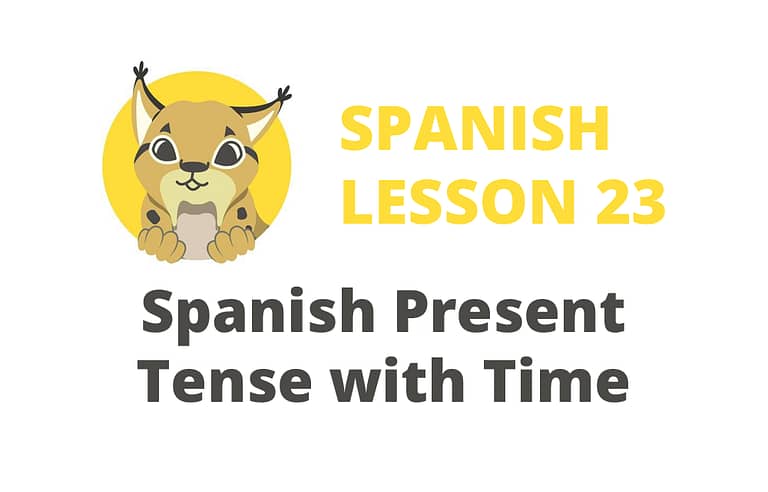This is the twenty-third lesson in our beginner level Spanish course and we will look at Spanish Present Tense with time.
This topic follows on from our previous lesson which introduced and explained how to ask and tell The Time in Spanish and the prior two lessons on using the Spanish Present Tense with Regular Spanish Verbs. In this lesson we will learn how to describe what we do in Spanish Present Tense with Time.
We use Present Tense to discuss things that we usually/generally do. Let’s remind ourselves of the patterns to conjugate (change the ending) of the majority of Spanish verbs (regular verbs) in present tense:
Conjugation rules for regular verbs in present tense
| Yo Tú Él/Ella Nosotros/as Vosotros/as Ellos/Ellas |
-o -as/-es -a/-e -amos/-emos/-imos -áis/-éis/-ís -an/-en |
We will now start using these patterns to make sentences in present tense using the regular verbs we learned in lessons 20 and 21 with times.
First let’s see how to ask someone at what time they do something:
¿A qué hora (verbo)? At what time (verb)?
To give the time you will use the following structures:
A la una: At one o’clock
A las dos/tres/cuatro/etc: At two/three/four o’clock/etc

If you would like to ask one person at what time they eat, you would say:
¿A qué hora comes?: At what time do you eat?
We have used the Spanish verb Comer (To eat) which is a regular verb and therefore follows the conjugation rules above. For one person, Comer becomes Comes.
If you were to ask a group of people at what time they eat, you would say:
¿A qué hora coméis?: At what time do you eat?
In this sentence we have changed Comer to Coméis because the question is directed at a group of people rather than one person.
If one person usually eats at half past one, they would respond:
Como a la una y media: I eat at half past one
If a group of people usually eat at a quarter past two, they would respond:
Comemos a las dos y cuarto: We eat at quarter past two
As you can see, the verb endings are changed/conjugated according to the person or persons doing the action following the rules we have learned.

Let’s see some more examples of using the Spanish Present Tense with Time and different regular verbs:
¿A qué hora lees?: At what time do you read?
Leo a las nueve: I read at nine o’clock
¿A qué hora trabaja?: At what time does he/she work?
Trabaja a las ocho: He works at eight o’clock
¿A qué hora escuchan música Hilary y Juan?: At what time do Hilary and Juan listen to music?
Escuchan música a las diez menos cuarto: They listen to music at a quarter to ten
Some other useful structures:
…de la mañana: …in the morning
…de la tarde: …in the afternoon
…de la noche: …in the evening
For example:
¿A qué hora corréis?: At what time do you run?
Corremos a las cuatro de la tarde: We run at four o’clock in the afternoon
¿A qué hora lava la ropa?: At what time does he/she wash the clothes?
Lava la ropa a las once de la mañana: He/she washes the clothes at eleven o’clock in the morning
Please practice what we have learned here today about Spanish Present Tense with Time by creating your own practice sentences. Use the regular verbs from lessons 20 and 21, plus any others that you already know.





